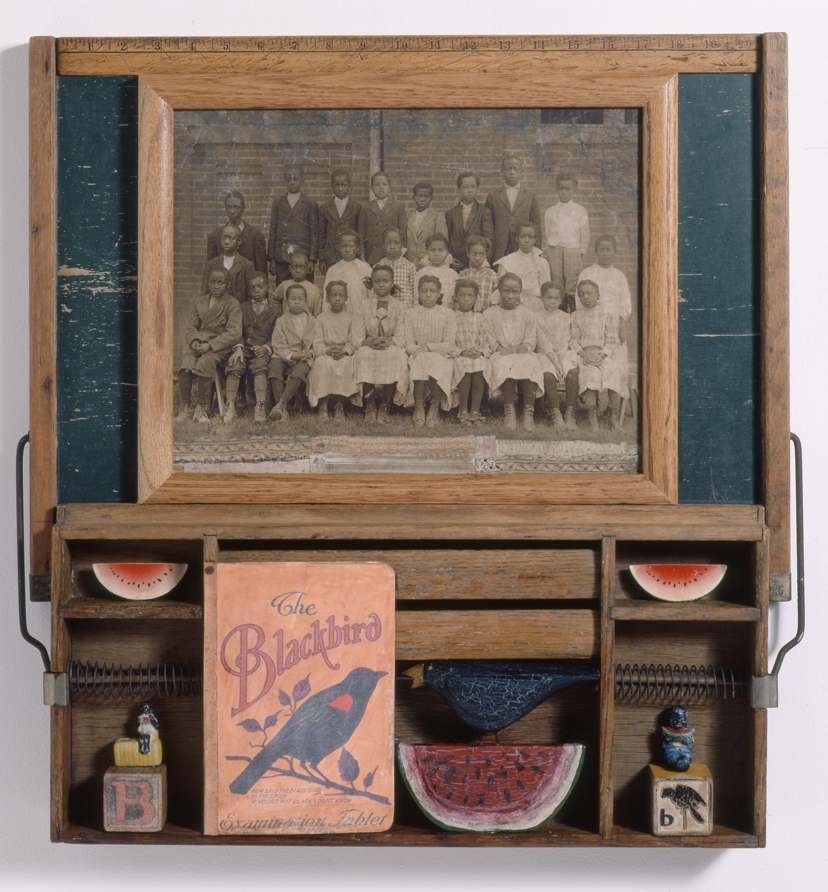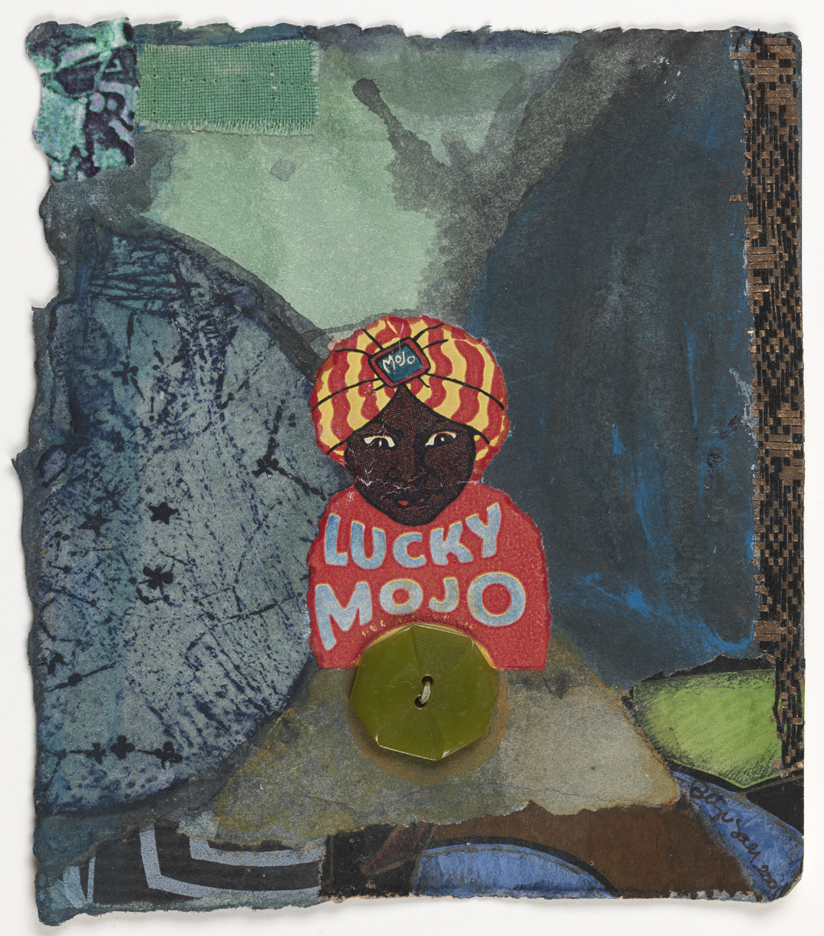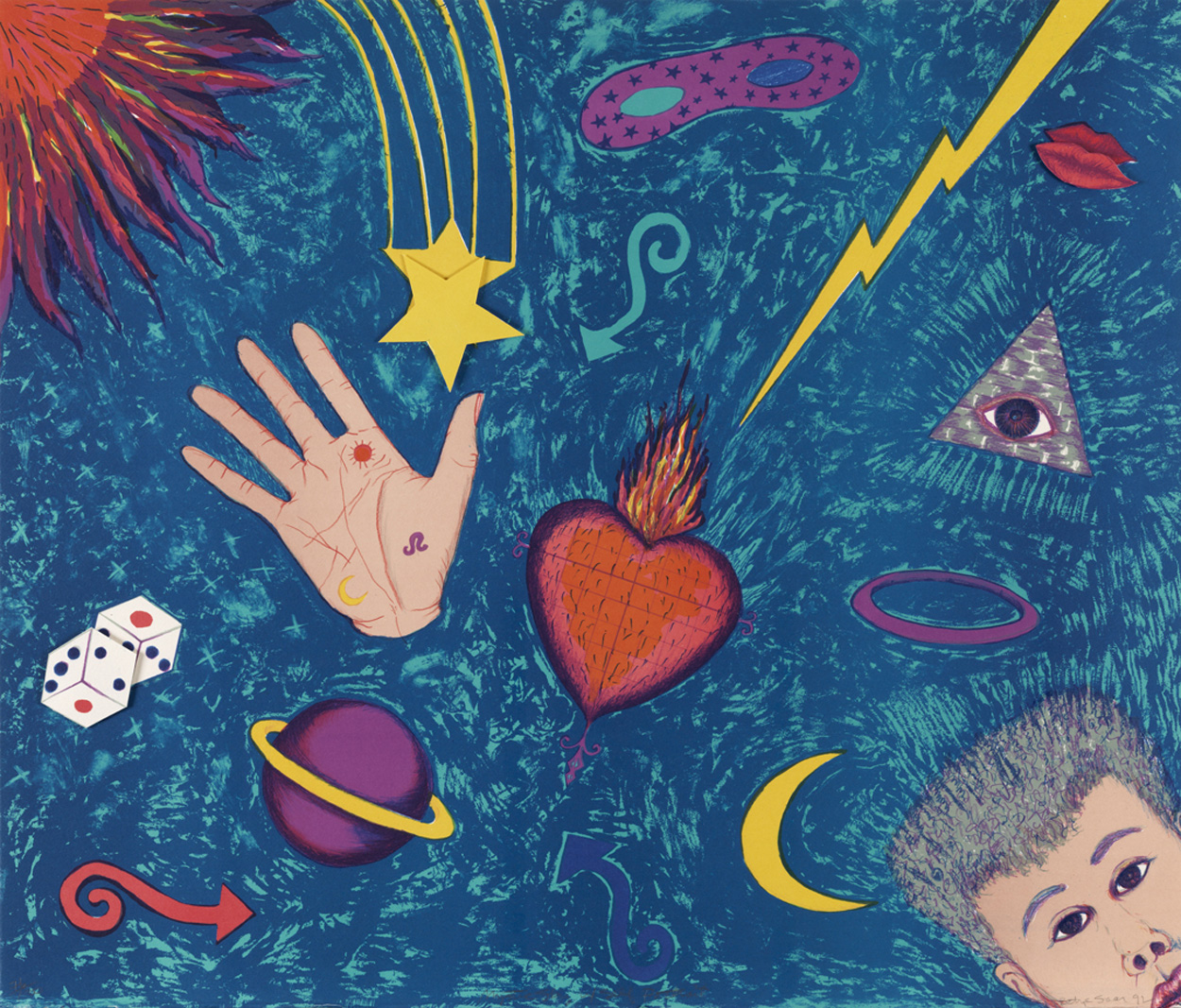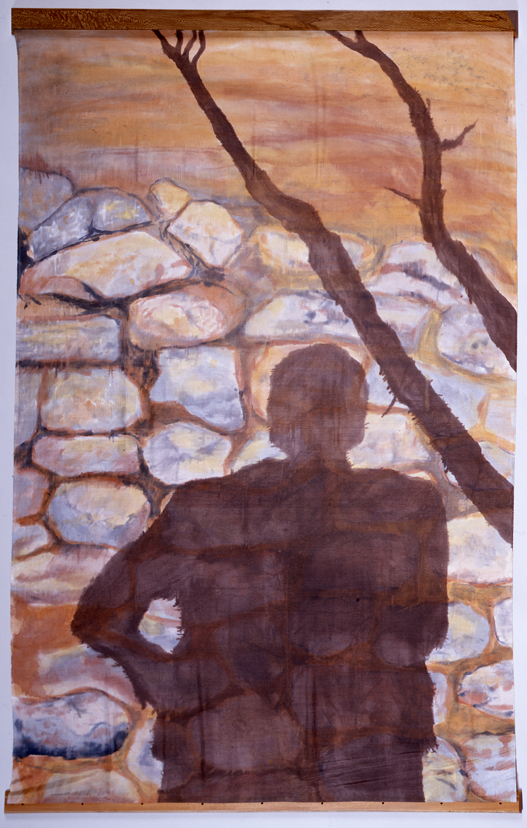
Blackbird
Betye Saar
Although the term "blackbird" was originally a racist epithet, with the rise of the Civil Rights movement in the 1960s and 1970s, the word was appropriated and transformed into a term of endearment. In this three-dimensional assemblage, Betye Saar addresses the fact that, while enslaved, African Americans were often forbidden to learn to read and write. They taught themselves and their children in secrecy and established a rich cultural heritage complete with linguistic associations. The focal point of this work, mounted to vintage blackboard, is a photograph of a third-grade class taught by Saar's great aunt Hattie in Missouri in 1911. Below, Saar placed symbols of enslavement and racism into compartments. Watermelon slices, a fruit that was credited with keeping many slaves alive but later symbolized the broader denigration of black people, are being eaten by small children perched atop wooden letter blocks - educational toys denied to slave children.
Of African, Native American, and Irish descent, Saar cuts across cultural boundaries by emphasizing the importance of keepsakes and memories to create a sense of belonging that is universally sought. Influenced by Joseph Cornell's box constructions, she often uses objects that narrate women's lives. Saar's focus on women has contributed to her reputation as one of the foremost feminist art activists of the twentieth century.
Artist
Date of Birth
(b. 1926)
Date
2002
Medium
Double sided mixed media assemblage and collage on vintage blackboard
Dimensions
23 3/8 x 23 x 2 5/8 in. (59.3725 x 58.42 x 6.6675 cm.)
Accession #
2004.6
Credit Line
Henry D. Gilpin Fund
Copyright
© 2002 Betye Saar Courtesy of Michael Rosenfeld Gallery LLC, New York, NY
Category
Subject
We're so excited you're planning to visit PAFA!
Make time for art — visit us Thursday to Sunday.
Before reserving your tickets, please review helpful information about museum hours, accessibility, building access, and special admission programs.
If you have any questions, feel free to reach out to us at visitorservices@pafa.org — we’d love to help!



